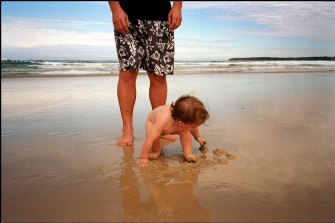City dwellers escaping to the regions putting pressure on housing crisis

City dwellers escaping to the regions are putting pressure on a severe rental shortage, with a vacancy rate below 1 per cent and double-digit rent rises across most of the state.
The number of rental bonds held by the NSW Department of Communities and Justice has also fallen across many parts of the state, suggesting some houses are no longer available to rent.
Tenants Union chief executive Leo Patterson Ross said the trend of people from the city moving to the regions had put pressure on already limited housing supply in country towns.
Beachside towns from Ulladulla to Nambucca Heads have seen a reduction in rental bonds, suggesting the return of holiday lettings.Credit:Louise Kennerley
“If someone moves from Brisbane to Byron, that person pushes someone from Byron to Lismore [before the floods], and that pushes someone else from Lismore to Grafton,” Patterson Ross said.
“That puts this big pressure on every town along the line, and that’s why we’re seeing these really large increases in rent.”
Regional migration has been a big trend since the COVID-19 pandemic started, as many office workers found they were able to work remotely long term. Australian Bureau of Statistics figures show nearly 25,000 people left Sydney for other parts of NSW from March 2020 to March 2021, the latest figures available.
When those sea-change and tree-change families rent, they push up prices in their new hometown by increasing rental demand. When they buy as an owner-occupier, they push up prices by reducing rental supply.
Trish Burt, convenor of Neighbours Not Strangers, said holiday rentals were another big reason for the lack of rental supply.
She pointed out there were 3311 Airbnb listings in Shoalhaven, but SQM Research listed only 155 residential rental homes. In Byron Bay, there were 3313 Airbnb listings and only 43 residential rentals.
“Councils must be mandated to enforce residential zoning – this would trigger a major correction in the rental market,” Burt said.
“With the major push to reboot mass immigration to provide staffing for those in dire search of employees, without a very substantial return of housing, a dire situation is about to get so much worse.”
South Coast resident Jemma, who asked for her surname to be withheld, said the government was not doing enough to support low to middle-income earners to get into the market or to be secure with housing.
“After COVID I have noticed that so many of the places in popular towns like Gerroa, Gerringong and Jervis Bay are sitting there during the week and being rented on Airbnb,” she said.
“If people can afford to buy property to list it on Airbnb they should be taxed accordingly.”
Jemma said she had a steady income as a teacher and a $110,000 deposit, but prices almost tripled last year while she was looking for a property to buy, and she is now priced out.
Patterson Ross said holiday rentals were part of the problem, but pointed out vacancy rates did not improve substantially when the holiday rental market shut down in 2020.
NSW government figures show, from March 2020 to now, the number of bonds fell 7.7 per cent in Nelson Bay north of Newcastle, 6.3 per cent in Ulladulla on the South Coast, 4.3 per cent in Muswellbrook in the Hunter Valley, 4.2 per cent in Nambucca Heads on the North Coast, and 3.7 per cent for Forster on the Mid North Coast.
Lismore had a 7.8 per cent reduction in bonds, exacerbated by the destruction of homes in the floods.
SQM Research reports Lismore had a vacancy rate of 0.4 per cent in April, and the asking rent for a house was up 31.3 per cent for the week ending May 20, compared with the previous year. Tweed Heads, which was also part of the national flooding disaster, has a vacancy rate of 0.2 per cent.
Many other areas are also extremely tight. Queanbeyan near Canberra has a vacancy rate of 0.3 per cent, while rents for houses in Bowral in the Southern Highlands are up 27.4 per cent year on year.
Many areas on the North Coast and South Coast are still rebuilding after homes were lost in the 2019-2020 ‘black summer’ bushfires.
The property industry generally considers a 3 per cent vacancy rate to be a balanced property market. Patterson Ross said the benchmark was arbitrary and varied internationally; for example, a vacancy rate of 5 per cent was considered to be the equilibrium for country towns in the United States.
The Morning Edition newsletter is our guide to the day’s most important and interesting stories, analysis and insights. Sign up here.
Most Viewed in National
From our partners
Source: Read Full Article

